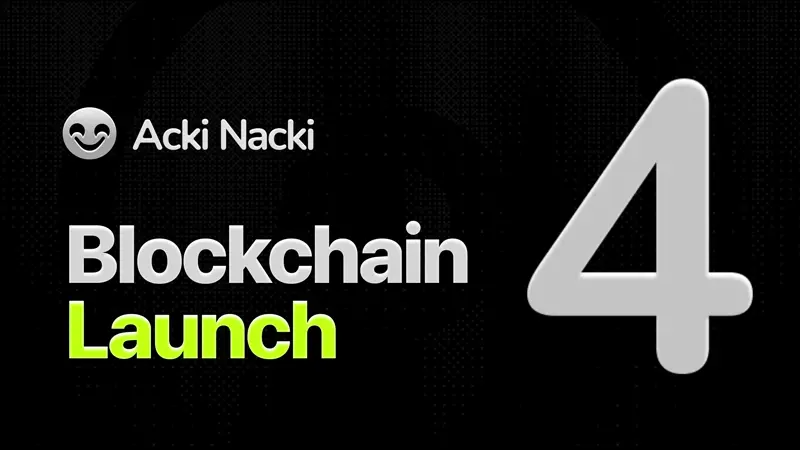Pre-Net is up, breathing, and already making test blocks. Not realy, but in few hours…
The devs shipped v0.7.0 today, which just screams: “last mile before mainnet”.
Expect this phase to run a few days to a few weeks, then sweitch to mainnet once the testing checklist clears.
What’s live right now
- Pre-Net Explorer is public, so you can watch blocks tick in real time and poke around the state. It’s not fancy, it’s enough, it’s alive. prenet.ackinacki.org
- Release
0.7.0landed August 29, 2025, with a bunch of “get-to-mainnet” changes: fallback protocol support, chain invalidation, BM DB rotation, account events in GraphQL, WASM for multifactor wallet token validation, plus a raft of performance and reliability fixes. This is the “polish the knife” build. GitHub - Timeline for Pre-Net is short by design, days to weeks, per Futurizt’s note on X. Translation, don’t overcomplicate, test what matters. X (formerly Twitter)
If you’re testing
- Node folks: docs say only Pre-Net participants get Zerostate configs to spin BMs from genesis. If that’s you, run through BM setup, check GQL on
:3000/graphql, and try the new pieces in0.7.0. If that’s not you, chill and use the explorer. Acki Nacki - APIs to touch: new account events in GQL, BK’s
get_accountreturns{boc, dapp_id}, plus metrics likelast_seqnoand outbound accounts. Good spots to hammer for correctness. GitHub
I’ll be rude and practical. If you’re a BM, validate zerostate handling, fallback protocol, and chain invalidation paths. If those pass, finality feels safe. Also, please stop stress-testing with memes. Hit the GQL event stream and measure latency, then try to make it cry. GitHub
Sources
https://x.com/Futurizt/status/1961202142535889236
https://prenet.ackinacki.org/
https://github.com/ackinacki/ackinacki/releases/tag/v0.7.0
https://docs.ackinacki.com/protocol-participation/block-manager/setting-up-block-manager-node
Pre-net vs. mainnet
1) Pre-network vs. main mining
- Purpose
- Pre-network (Pre-Net): short-lived testing net to validate the latest release, configs, and zerostate plumbing. Access is gated to testers, mainly so they can boot from zerostate and shake out edge cases.
- Main mining (mainnet): production chain where real NACKL emission starts and tokenomics apply. Rewards flow per role, on-chain, with slashing and reputation rules.
- Who can join
- Pre-Net: invited participants only, because only they get the configs and tooling to spin nodes from zerostate.
- Mainnet: open to licensed node owners per Launch & Genesis; zerostate bakes in BK wallets, licenses, and mappings at network start.
- State & stability
- Pre-Net: ephemeral, can be reset, break things on purpose. No guarantee of data or economics. (That’s the point.)
- Mainnet: durable, economic finality, and slashing/validation rules enforced per protocol and contracts.
- Rewards logic
- Pre-Net: no published token rewards; it’s a testing lane. Treat it as zero unless an explicit program is announced.
- Mainnet: rewards paid for network participation (not fixed “staking APY”). Distribution is preset across roles (see below).
2) Approximate duration of Pre-Net
- The team has framed Pre-Net as a short window, days to a few weeks, to validate changes and prep Genesis inclusion. There’s no hard cutoff published.
3) Rewards/incentives for early consensus participants
- On Pre-Net itself:
- No official on-chain rewards are published. Pre-Net’s concrete incentive is positioning: testers get the configs needed to be in zerostate, so they can start validating from block zero on mainnet. That maximizes time-in-protocol once rewards are real.
- Once mainnet starts (“main mining”):
- Emission horizon: rewards mint over 2,000,000,000 seconds total, roughly 63.4 years.
- No pre-distribution: tokenomics explicitly say there’s no pre-distribution before launch. Early epochs even have special handling while stake accumulates.
- Role-based split of the global reward (GRPS):
- Block Keepers: 67.5%
- Mobile Verifiers: 22.5%
- Block Managers: 10%
These are set via KR coefficients in the tokenomics spec.
- Reputation Coefficient (BKs): continuous, uninterrupted validation increases a multiplier from 1.0 up to 3.0 over time; skip an epoch and it resets. Starting from Genesis helps you climb that curve sooner.





